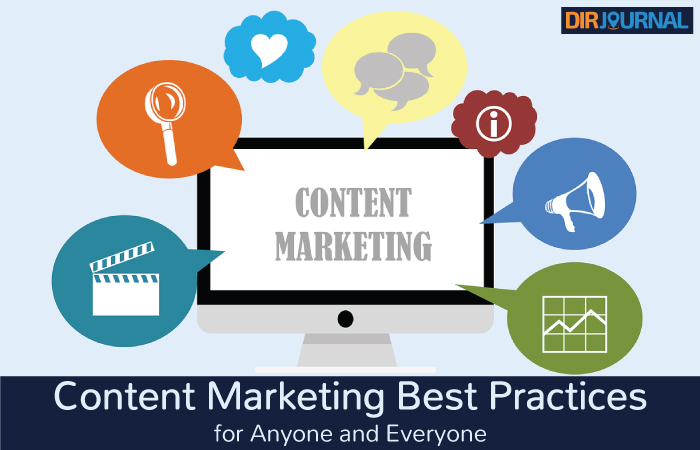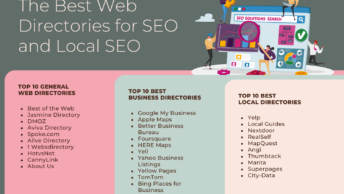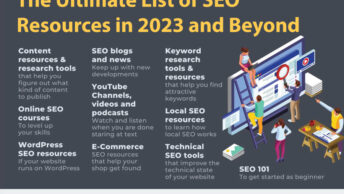In research on the topic of “content marketing best practices,” I discovered that there are a lot of them out there! It isn’t so much that there is a long list (though it is that, too). Instead, there are different categories of “content marketing best practices.” I’ve compiled them together in one list and provided you with the resources where I got the information so that you can check it out for yourself. Ready?
First things first. In order to give credit where credit is due, I’ve included the resource, by number, in parenthesis that follow the list item. Please keep in mind that these resources are not listed in any particular order. They are truly random with no sorting whatsoever. Also, for all of you academic types, I realize that this is an unorthodox what of citation but hey, it works. The key is that we are giving the credit where it is due, so please do visit these websites and read the articles that support this list.
Oh, one other thing… Pay particular attention to the items that have a “(7)” as the citation. Why? Those come from the Yahoo link about content marketing for millennials. It is very interesting and something that all of us should keep in mind (unless you want to ostracize a particular generation, which is really not an advisable step.
As with all content, keep in mind that these best practices may change according to culture. Use the millennial example, it is possible that individuals of the same age from other cultures and other countries may not view life the same way. That said, there is less separation, when it comes to content marketing, because of the accessibility asspect, in our “global culture.”
The Big List
Here is the list, broken down into groups. The list, as one big laundry list is a bit tricky to remember (not that we expect you to remember it all!). Also, some of what was termed as “best practices” were tips or suggestions, so we categorized it to separate it out into what seems to make the most sense.
This list started out as “content marketing best practices,” but also includes “content best practices.” It was researched with the “content marketing” term and definitions of the original authors may differ. The definition discussion depends on your perspective. If you are thinking “marketing,” then it is marketing by way of the use of content, hence “content marketing.” If you are thinking from the perspective of content production and how you market that content that has been created, then your perspective may be a bit different. Either way, it is good stuff and worth passing on to you.
Strategy Related:
Strategy related best practices relate to the process of laying out your content marketing strategy. Picture yourself sitting at a desk and writing out your plans for your content strategy. These are the things that you will want to keep in mind as you prepare that strategy. Granted, feel free to use a computer instead of pen and paper. ;D
- The content needs to support your business objectives (1). This would mean that you need to have those buiness objectives defined first. It is helpful to have the short version of those objectives in front of you, as you prepare your content marketing strategy.
- The content should be unique, whenever possible (2). Remember the article on defining your USP? This is the time to put that in action, during your strategy development session.
- Analytics need to be a part of the overall strategy. Without it, there is no way to measure the success of the strategy (4).
- When you have figured out your own “content formula,” repeat it. Build it into your strategy (3).
- Consider guest blogging on other sites and including that in your strategy, for additional exposure (8).
- This one is a bit obvious, but needs to be stated. Ensure that you have started a blog (5).
- Consider investing in paid advertising (8). This may not related to the content development, but does relate to your overall marketing strategy which is like the parent to the content marketing strategy.
- Focus on growth within your strategy (6) and (8). Build in areas for what is called “lessons learned” in project management. That is a reflective phase where the content strategy may be tweaked for continuous improvement.
- Work the strategy. Ensure that it isn’t just “on paper” (8).
Procedure Related:
Now that you have your strategy, or at least your initial strategy, it is time to look at some procedures. This includes the fulfillment of the steps defined by your strategy.
- Set up an editorial (content) calendar (1) and (3).
- Create the special content at the same time as the not-so-out-of-the-ordinary content (2). Ensure that you are creating content that allows you to be memorable, but also create the core content at the same time. Check out the resource list, below, for a more detailed explanation.
- Ensure that you are using technology to the maximum level (8). With more and more platforms available, there are more choices and you will want to keep on top of the presenation of your content (7), as well as your ability to create it.
- Keep organized (7). In addition to the editorial calendar, you will want a way to track your employees, consultant, contract writers, and even yourself! Fortunately there are many online tools available to do just that.
Audience Related:
This one is a biggie. It is important to attract the audience and keep the audience. You need to engage with your audience.
- Assess your audience and target that audience (6). Don’t be surprised if you set out to attract one type of audience and find that the statistics demonstrate that you have attracted a different audience. If possible, modify your strategy to work with the audience that you are attracting, since half the battle has already been won. If that is not the right audience then you will need to rework your strategy to attract the right audience.
- Ensure that your content grabs the audience (6).
- Attempt to understand your audience (3). Understand their values, their expectations (i.e. patience level and content desires), and what draws them (7). The millenial generation has been known to value transparency. They also enjoy a bit of humor (7).
- Give the “real story” behind your company or brand (2).
- Don’t assume. Instead, fill in the gaps for your readers (2).
- Act like a member of the audience, but ensure that you are real (8) and (7).
Content Suggestions and Considerations:
- Consider adding unique content such as interviews, answers to questions, outtakes (i.e. videos), and related (curated) content (2).
- Repurpose your own content, ensuring you have permission to do so in cases where the content was provided by a contractor (2) and (3).
- Continue to develop more content (5). Use the tips, above, for unique content, including the repurposing. Also, you may want to consider adding to your staff and supply of content. This is something that you may want to work into your overall content strategy.
- Remember that it is not about the length (5). Some people will say shorter is better and some will say longer is better. The key is the quality.
Operational Considerations:
There are procedures and there there is the operational end of things. That is the part that is ensured to be running smoothly. So, the functional part (procedures) would be like having wheels on your cool office chair, with the procedure being that you sit in the chair while you work. However, the operational part includes having the WD-40 to use on the wheels to ensure that they work properly and don’t squeak. It is the part of the organization that allows the procedures to be carried out smoothly.
- If you are a part of a company, you will want to ensure that the C-suite is on board with what you are doing. (3).
- Do your job well (5). This is somewhat obvious. Without that, from an opeartional level, there is no future because the company would go downhill with poor quality.
- Realize it is expensive (5). The sooner that is realized, the less time (less wheel squeaking) is spent trying to fight it. Also, keep in mind the ROI (return on investment) when it comes to trying to get it for free. It is good to save money but if you are spending 10 hours of $40/per to get something for free when you could have paid $100 for it, you will have wasted $300. In that example, you will have spent $400 in time to get the same thing you could have obtained for $100.
- Prioritize (8). This cannot be overstated and is something that should be looked at from a broad level (i.e. measured and assessed weekly) and even reviewed daily with a Six “To Do” items per day approach.
The Resources / Sites
Here is the promised list of resources so that you can perform your own research 🙂
- Oracle’s Modern Marketing Essentials (Downloadable ebook)
- Content Marketing Institute’s 10 Content Marketing Best Practices for Greater Efficiency
- Act-On’s Six Best Practices for Creating a Content Marketing Strategy
- Oracle’s Best Practices (Topic: Content Marketing)
- CrazyEgg.com’s 5 Content Marketing Best Practices You Should Probably Ignore
- GroupHigh.com’s Content Marketing Best Practices
- Yahoo’s Content Marketing for Millenials (love this one!)
- EContent’s Content Marketing Best Practices From Online Influencers







